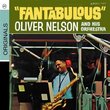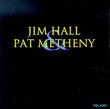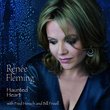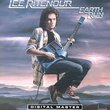| All Artists: Oliver Nelson Title: More Blues & Abstract Truth Members Wishing: 6 Total Copies: 0 Label: Grp Records Release Date: 3/11/1997 Album Type: Original recording remastered Genres: Jazz, Pop Styles: Modern Postbebop, Bebop Number of Discs: 1 SwapaCD Credits: 1 UPC: 011105021227 |
Search - Oliver Nelson :: More Blues & Abstract Truth
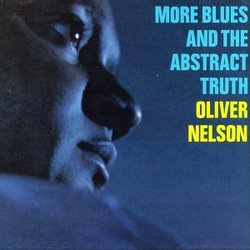 | Oliver Nelson More Blues & Abstract Truth Genres: Jazz, Pop
|
Larger Image |
CD DetailsSimilar CDs
Similarly Requested CDs
|
CD ReviewsOliver Nelson doesn't perform on this album Tony NYC | Brooklyn, NY USA | 03/26/2006 (3 out of 5 stars) "The original "Blues and the Abstract Truth" is one of my all time favorite albums and I rate it at LEAST 5 stars. This "More Blues @ Abstract Truth" is a good follow up, but nowhere near the original, which was recorded three years earlier. I love the fact that Phil Woods is on this album, but am very disappointed that Oliver Nelson does NOT play on this album. Yes, is was generally known that Nelson became more known for his writing skills than his playing, but for me personally, his writing COMBINED with his playing on the original recording made all the difference. If you already have the original "Blues and the Abstract Truth", then this would be a welcome addition. After the 1961 "Blues" original, I personally prefer his 1975 album, "Stolen Moments", and his 1960 recording "Screamin' the Blues" with Eric Dolphy, much more than this CD. Like I said, the fact that he doesn't even perform on this CD is a big minus for me, on an otherwise great CD. 3 Stars." A FABULOUS, SIZZLING, SWINGING SESSION !! RBSProds | Deep in the heart of Texas | 04/19/2005 (5 out of 5 stars) "Five Stars? Let's give it SIX STARS!! One of the best composed, wonderfully arranged and inspired blowing session jazz albums in my entire collection. Oliver Nelson's followup to the Five Star CD "The Blues & The Abstract Truth" is FABULOUS! With Nelson in the role of writer, arranger, and conductor, his top drawer arrangements 'unleash' the players to get the very best from each of them. Underpinned by the monster rhythm section of Roger Kellaway, Richard Davis, and Grady Tate, Nelson insured this would be a special burning & swinging experience for the listener. And then he added the unison horns of Phil Woods, Thad Jones, and Pepper Adams for some real spice. Plus he brought in Ben Webster's unique tenor sax. Talk about 'stacking the deck'!! The 'Piece D'Resistance', the best of the best, amongst this bevy of fabulous performances is the song "Blues and the Abstract Truth", which starts the CD with a long, convoluted, multi-noted, dynamic 'theme in three- sections', setting up sizzling solos by Roger Kellaway, Phil Woods, Pepper Adams, and Grady Tate. Notice how Nelson uses a simple two-noted repeat figure by the rhythm section to raise the second half of each solo to another level of intensity. One of the finest group and individual performances I have ever heard, with each solo 'uping the ante' all the way to the two-headed ending. WOW! But the rest of the CD is just as interesting, intense, and swinging. Phil Woods and company are in top form ripping off memorable solo after solo (Thad Jones' solo on "Blues for Mr Broadway" is a blue sizzler! Kellaway's solo on "Going to Chicago Blues" is a real hoot, as is Mr Woods). And Ben Webster, obviously in an elder statesman cameo role, almost steals the show with "Blues For Mr Broadway". His solos are models of inventiveness, experience, and cunning, with a voice-like, laconic sound that is one of the rare pleasures in modern jazz. Oliver Nelson was incredible and left the bandstand and the music studio much too young. This is a 'must have' essential CD in any serious jazz collection. Five Stars are not enough Six HUGE Stars!!!!!!" "More" doesn't necessarily mean better Bomojaz | South Central PA, USA | 06/19/2006 (4 out of 5 stars) "This is a follow-up album (perhaps) to Oliver Nelson's landmark Impusle recording BLUES AND THE ABSTRACT TRUTH, recorded in 1961. The personnel is different, and although top-notch in their own right, can't compare to the freshness and excitement generated by the original group. Two tracks stand out: THEME FROM MR. BROADWAY, a Dave Brubeck composition done for a TV series, with fine solos by Thad Jones, Pepper Adams, and Phil Woods; the other is GOIN' TO CHICAGO BLUES, which is a complete reworking of the famous Jimmy Rushing-Count Basie tune, with Woods taking solo honors. Ben Webster joins the group on two songs, and his solo on BLUES FOR MR. BROADWAY is long and sonorous and especially fine. It might be unfair to totally piggy-back this album, which was made in 1964, to the 1961 release (other than the near-duplicate title with the perhaps unfortunate use of the word "More" in it, they are very dissimilar), but it's easy to compare the two and bemoan the absence of Freddie Hubbard and Eric Dolphy here."
|

 Track Listings (10) - Disc #1
Track Listings (10) - Disc #1